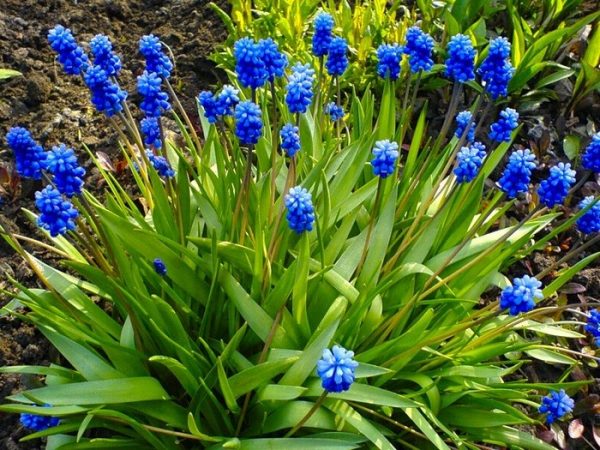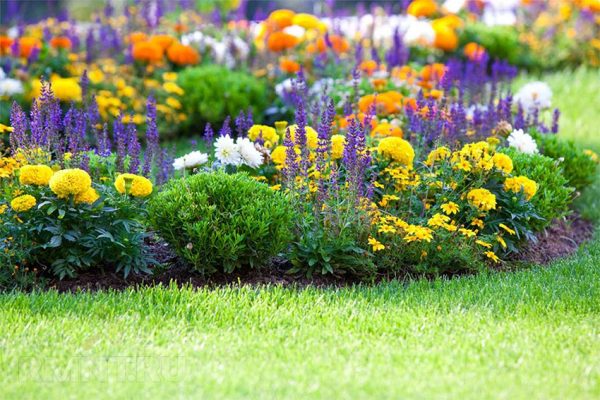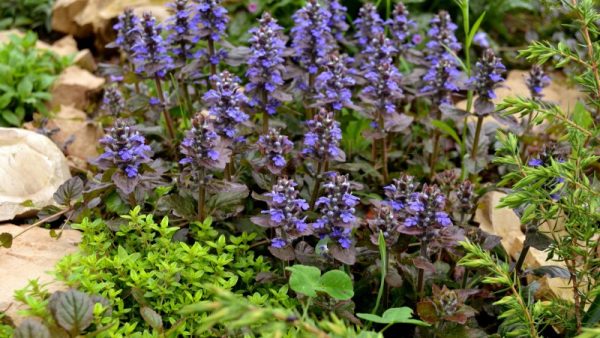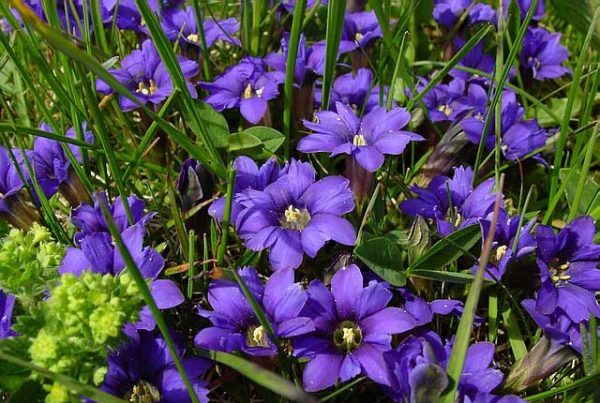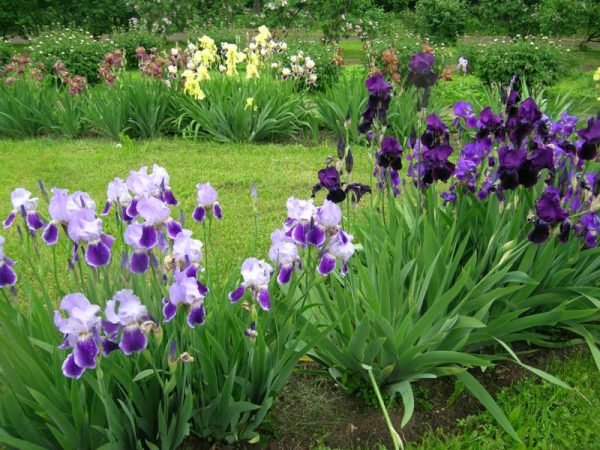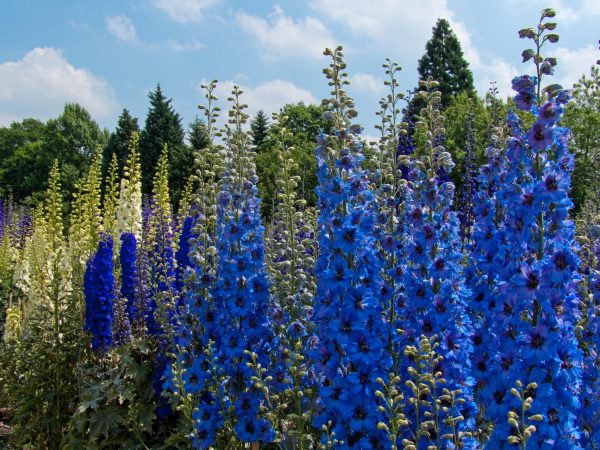Perennials for summer cottages blooming all summer: an overview of the most beautiful
Content
Benefits of perennials
It is believed that annual garden flowers are brighter and more abundantly blooming than perennials. Even so, this is perhaps their only advantage - they quickly blossomed, bloomed magnificently, and the next year they need to be sown again. But perennial flowers, in comparison with annuals, have a number of advantages and benefits:
- first, and most importantly, perennials have been growing in one place for several years and do not need to be planted annually;
- most plants of this species bloom during the entire warm season from May to September, and some before the onset of frost;
- they are also quite resistant to diseases, pests, drought and frost - many perennials (irises, daffodils, snowdrops) are so frost-resistant that they can grow well in the harsh climate of Siberia;
- almost all perennials are unpretentious - they can grow on any part of the cottage: in the shade, on stones, in poor sandy soil;
- such plants do not need regular care - watering, weeding and other activities are carried out only as needed;
- perennials retain their decorative effect throughout the season, and some undersized species (aubrieta, periwinkle, yaskolka) retain their greenery even under snow;
- profitability - any composition of perennials will cost much more economical than the annual purchase of seeds or ready-made seedlings.
In addition, perennial flowers blooming all summer long are very diverse. There are plant species that number several hundred or thousands of varieties. For example, there are about 4 thousand varieties of tulips alone. Curly, low, tall flowers, with large or small inflorescences - every gardener can choose suitable for a summer cottage or garden. Thanks to the huge selection of varieties, you can create the most beautiful and varied compositions from perennials.
Landing
When planting perennials, it is important to take into account a number of conditions under which flowers will grow well and for a long time. First, it is the soil. Although perennials are not capricious, there are optimal conditions for each flower: alpine flowers grow better on rocky or sandy soil, irises, peonies, roses - they prefer soil with neutral acidity.
It is equally important to choose a suitable site when planting. For example, ferns grow well only in the shade, and daylilies, phloxes, irises can grow both under the bright sun and in the shade, and there are flowers that can only grow in the sun.
Perennial flowers can be planted by dividing the bush, layering, cuttings or seeds. As a rule, perennials are planted in the fall, so that by next spring they can take root and bloom. The planting time is selected depending on which plants are planted.
Early flowering bulbous species are planted in mid-September - October, about a month before the first frost.Summer blooming varieties are planted a couple of weeks before frost. It is better to plant peonies, irises, phloxes by dividing the rhizomes. It is better to plant perennials from a cutting in the spring, so that during the summer period the plants take root and get stronger.
Video "Perennials in the garden"
Video review of popular perennial flowers for the garden.
Perennials blooming all summer
Perennial flowers can be classified according to many parameters: flowering time, soil and light requirements, and height. It is the height of the plants that is of particular importance in garden design, since the classic layout of harmonious flower beds involves planting flowers in tiers. Depending on the height, perennials are divided into three groups:
- undersized (up to 50 cm) - this includes ground cover and low border species;
- medium-sized - their height varies from 40-50 cm to 80 cm;
- tall - above 1 meter, climbing plant species can also be attributed to this group.
Undersized
These perennials are used for planting in the foreground, as a curb, and to fill the space between tall plants:
- subulate phlox - low (20-30 cm) ground cover flowers, rather unpretentious, shade-tolerant, grow quickly and retain their green color under the snow;
- armeria seaside - very undersized (15-20 cm) border flowers, not demanding on the soil, frost-resistant, look good along paths, on rocky areas;
- periwinkle - an evergreen ground cover crop, reaching a height of 10-15 cm, blooms twice a season with blue, white or pink flowers, grows very quickly, forming a dense cover;
- large-flowered flax - fairly low (up to 50 cm) gently blue flowers, undemanding to conditions, decorate the dacha with their flowering almost all summer;
- alpine aster - low (up to 15 cm), very frost-resistant flowers, grow well in the harsh climate of Siberia, are planted on alpine hills and Moorish lawns;
- gentian - non-capricious, very undersized bells of bright blue color, perfect for alpine hills, bloom from late June to late August;
- soft cuff - a low (up to 40 cm) perennial with decorative leaves and small yellow flowers, which are collected in lush inflorescences, looks great on stones, along the edges of flower beds and as a border;
- carnation grass - low (up to 30 cm) ground cover plants, with creeping shoots and very bright flowers, grow quickly, look very solemn on the stones, in the foreground of flower beds;
- sea alyssum - very decorative border flowers, blooming from June to the very frosts, not capricious, look great on rocky areas of the cottage, alpine hills, along the paths.
Medium-sized
Of the representatives of this species, blooming all summer are:
- garden lilies are the most elegant and at the same time unpretentious flowers, they feel great both in the sun and in the shade, they are very diverse in varieties and colors, they can grow up to 5 years without transplantation;
- iris is a perennial that is undemanding to soil and light, it can grow well both in the sun and in the shade of the garden, among this species there are varieties that bloom at completely different times, which allows you to enjoy the colors all summer;
- daylilies are the most unpretentious of perennials, they are very diverse in color and flowering period, they feel good in the shade, do not freeze out, do not need care;
- Rhodiola rosea - an ornamental plant with fleshy leaves and small flowers, which are collected in dense inflorescences, very frost-resistant - in nature, Rhodiola grows in the tundra and alpine zones, therefore, it is perfect for the regions of the Urals;
- peonies are elegant and romantic garden flowers, grow well in sunny areas, there are many varieties that differ in flowering period: early, mid and late blooming.
Tall
Tall perennials include:
- rudbeckia - sunny, very bright flowers with pointed petals, outwardly similar to daisies, undemanding to conditions and care, can decorate the cottage with their flowering all summer;
- astilba is a non-capricious perennial, with very small flowers, which are collected in paniculate inflorescences, can reach a height of 1.5 m, looks great in the background of the flower bed;
- delphinium is a very tall (up to 2 m) perennial with long inflorescences of predominantly purple-blue color, does not require care and transplantation, feels good in the sun and in the shade, but blooms longer in the shade;
- echinacea is an ornamental and at the same time a medicinal plant with large flowers, can grow in absolutely any soil, does not need care;
- stock rose (mallow) - a very majestic bushy perennial with multiple flowers located on high stems, non-capricious, can grow anywhere, does not need to be transplanted;
- sweet peas - beautiful and very fragrant curly flowers with luxurious bunches, not picky about soil and care, grows quickly, like all curly flowers, needs a vertical support.
Many gardeners are interested in the question - what curly flowers can be grown in the cold climates of northern latitudes? There are several varieties of frost-resistant vines that have taken root well even in Siberia: Alpine, Tunguska, and Siberian clematis are climbing varieties with medium-sized, but long-blooming blue inflorescences.
Video "Perennial garden plants"
Video recommendations for the care and cultivation of perennial garden plants.

